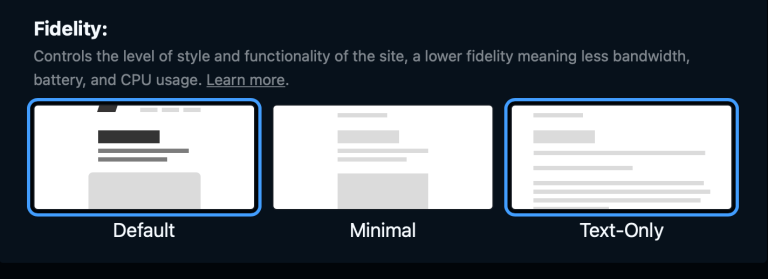
JavaScript (JS) is a dynamic web programming language that can update and alter both CSS and HTML. It conforms to the ECMAScript specifications and is used to manipulate, validate, and control data. JavaScript frameworks are basically tools that make it easy to work with JavaScript. They provide developers with pre-built templates that make common programming patterns reusable. This saves developers time when it comes to writing code for every new application.
How to Choose the Best JavaScript Framework for Your Team
Table of Contents
Figuring out the best JavaScript Framework to use can be a bit daunting since there’s so many to choose from. However, to get you started, here are some factors that you should keep in mind.
- Backend compatibility: For your JavaScript Framework to work effectively, you must use a back-end that supports it.
- Level of complexity: Pick a framework that can handle the complexities of your apps and websites like a pro. Using lighter frameworks for complex apps might result in a number of problems in the long run.
- Size and performance: This goes hand in hand with the type of system you’re building. The more complex the app the bigger the framework and vice versa. Remember balance is key!
- Familiarity: If your team is familiar with a particular framework, be sure to stick to it. Some of the most common are angular, react and vue. These frameworks can be adjusted depending on what your desired outcome is.
Here’s a list of the top 6 best JavaScript frameworks to use in 2021.
React
React is an open-source framework that was created in 2013 by Facebook. It quickly gained popularity among e-commerce website developers because of its dynamic user interface that can withstand high traffic.
Some of its key features include:
- It is made up of a number of components that can be used more than once.
- It uses componentDidMount and render to enhance code execution at some points.
- It’s rendering boosts app performance while saving the developer from more work in recalculating page layout.
Pros
- It’s relatively smaller in size.
- Easy to learn and use.
- Promotes performance enhancement.
Cons
- You have to use it with other frameworks.
- Has constant upgrades.
Angular
Angular is a powerful, efficient, and open-source JavaScript framework. This type of framework is not recommended for beginners and needs a deeper understanding of JavaScript. Global companies like Forbes and Google use this platform.
Some of its key features include:
- High cross-platform performance.
- Offers feedback options and quick error detections.
- Offers an advanced form of API.
- Offers a number of in-built services.
Pros
- Has the capacity to separate data and view.
- All changes are quickly displayed in view.
- Perfect integration between model and view.
Cons
- The framework is more complex for beginners.
- Requires the developer to learn Model View Controller (MVC).
Ember.js
Ember.js was first introduced to the market in 2015. Popular sites like LinkedIn, Yahoo, and Netflix use this platform.
Examples of popular tools that integrate with Ember.js are Node.js, Semantic UI, and Bootstrap.
Some of its key features include:
- It’s reusable and easy to maintain.
- Can be used in large teams.
- Has more than 1500 add-ons.
- Offers CSS and HTML development models.
- Has tools for debugging applications.
Pros
- Has client-rendering services.
- A great URL support.
Cons
- Not as fast as other frameworks.
- Complicated to learn.
Polymer
Polymer is a popular open-source JavaScript library that was created by Google developers and contributors on GitHub. Polymer helps you create custom elements or HTML tags as per your requirements. Apps like Google Maps and Youtube are built with Polymer.
Some of its key features include:
- Supports new web standards and open-web technologies.
- Onboarding is faster.
- Supports DOM and shadow.
- It’s the best JavaScript when it comes to progressive web apps.
- Used for creation of reusable widgets in web applications and documents.
- Has polyfills that allow creation of re-usable and customized elements.
Pros
- Developers can create customized elements using HTML, CSS, and JSS.
- Connecting to third-party libraries is quick and easy for developers building applications.
- Polymers allow both one-way and two-way data binding.
- Easy onboarding.
Cons
- Low performance on mobile platforms.
- Difficulty in handling large scale applications.
Node.JS
Node.js framework is a platform that developers use to enhance back-end development. Node works well across platforms and is open-source. It shows JAVA’s properties like packaging, looping and threading using the JavaScript Runtime environment.
The framework is mostly used in industries like IT and healthcare.
Some of its key features include:
- It’s fast when it comes to code execution because it is built on the V8 Javascript engine of Google Chrome.
- It does not buffer any data.
- It is open source.
- It is highly scalable.
- Follows a single thread mode.
- Has been licensed under MIT.
Pros
- Easy to learn.
- Offers high performance.
- Supports a large and active community.
- Offers freedom to develop apps and software.
- Offers extended support for commonly used tools.
Cons
- Lacks a strong library support system.
- The Application Programming Interface (API) keeps on changing at frequent levels.
Vue.js
The Vue.js framework is known to create strong Single Page Applications (SPAs). It’s commonly used in developing apps that work well across platforms.
Some of its key features include:
- It’s simple design makes it easy to understand and use.
- Has in-built components that help with animations and transitions.
- Has a data binding feature that allows it to manipulate HTML attributes.
- Has a virtual Document Object Model (DOM) that’s cost effective.
Pros
- Flexible and can be easily manipulated.
- It’s relatively smaller in size.
- Easy to integrate.
Cons
- Not recommended for extensive scaling.
- Doesn’t have essential plugins.
- Language barriers.
Conclusion
To find the best JavaScript frameworks to work with, it’s important that you know exactly what you’re looking for. This requires taking into consideration the capabilities of your team and desired functions of your app or website. JavaScript frameworks make work easier for developers and promote productivity.
This post may contain affiliate links. See our disclosure about affiliate links here.






